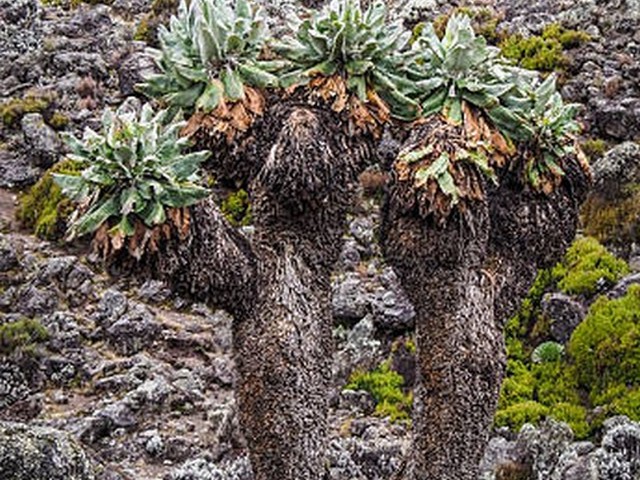How To Choose Trekking Gear For Kilimanjaro: Your Ultimate Guide
Introduction: Why Choosing the Right Gear Matters
Embarking on a journey to the roof of Africa, Mount Kilimanjaro, is a dream for many adventurers worldwide. Whether you’re an experienced mountaineer or a first-time trekker, the key to a successful and enjoyable climb is preparation—specifically, having the right gear. At Kilimanjaro Centre for Trekking and Ecotourism (KCTE), we understand that the right equipment can make or break your expedition. This blog post is designed to guide you through selecting the essential trekking gear for Kilimanjaro, ensuring you are well-prepared for the adventure of a lifetime.
H2: Understanding Kilimanjaro’s Unique Climate Zones
Before diving into gear specifics, it’s crucial to understand that Kilimanjaro is not just a mountain; it’s a series of climate zones that range from tropical to arctic. As you ascend, you’ll pass through lush rainforests, alpine deserts, and icy summits. Each zone requires different gear to ensure comfort, safety, and enjoyment. Thus, versatility and layering are key principles in choosing your trekking attire and equipment.
H2: Essential Clothing for Your Trek
H3: Base Layers
Start with moisture-wicking base layers. These are crucial as they keep you dry from sweat and provide insulation. Look for materials like merino wool or synthetic fibers designed for thermal regulation.
H3: Insulating Layers
Your next set of layers should focus on retaining body heat. Fleece jackets or down vests are perfect for this purpose, offering warmth without excessive bulk. Remember, the nights and summit push are extremely cold, so this layer is essential.
H3: Outer Layers
The final layer should protect you from external elements. A waterproof and windproof jacket is non-negotiable, as weather conditions on Kilimanjaro can change rapidly. Similarly, durable, water-resistant trekking pants are advisable.
H2: Footwear: Your Foundation for Success
The importance of well-fitted, sturdy trekking boots cannot be overstated. Choose boots that are designed for hiking, with good ankle support and a gripped sole for varied terrains. Break them in well before your trek to avoid blisters and discomfort. Don’t forget moisture-wicking socks and thermal socks to keep your feet warm and dry through your climb.
H2: Headgear and Gloves: Protecting the Extremities
A good sun hat is essential to protect you from UV rays during daytime trekking. For the cold, a beanie or balaclava will provide warmth, especially in the summit zone where temperatures can plummet. Similarly, waterproof and insulated gloves are vital to protect your hands from frostbite during the summit night.
H2: Backpacks and Poles: Essential Accessories
A durable, comfortable backpack is critical, typically 30-40 liters, fitted with straps and a support system that eases the load on your back. Hydration systems (like a CamelBak) are highly recommended for easy access to water without having to stop and unpack.
Trekking poles are invaluable as they reduce the impact on knees and legs, provide balance, and can help establish a steady rhythm in your walking.
H2: Sleeping Gear for Restful Nights
Since nights on Kilimanjaro can be frigid, a four-season sleeping bag and an insulating sleeping pad are essential. These provide the necessary warmth and comfort to recover from a long day’s trek and gear you up for the next.
H2: Technical Gear for Special Circumstances
For those trekking the more technical routes like Western Breach, additional gear such as helmets and harnesses may be required. Always consult with your tour operator, Kilimanjaro Centre for Trekking and Ecotourism – KCTE, to understand the specific needs based on your chosen route.
H2: FAQs: Common Questions Answered
Q1: How do I choose the right size of clothing and boots?
Always try on trekking clothes and boots before buying to ensure they fit well. Consider that you might need additional layers under your clothing.
Q2: Can I rent gear instead of buying?
Yes, you can rent major gear items like sleeping bags, trekking poles, and even boots. KCTE provides high-quality rental options for those not looking to purchase.
Q3: What should be in my daypack?
Your daypack should include water, snacks, a first-aid kit, extra clothing layers, sun protection, and a camera to capture the breathtaking views.
Summary: Ready to Conquer Kilimanjaro?
Choosing the right trekking gear for Kilimanjaro is fundamental to enjoying and successfully completing your climb. From the lush slopes of the rainforest to the majestic icy summit, being well-prepared allows you to fully immerse in the beauty and challenge of this iconic mountain.
Ready to take on Kilimanjaro? Let Kilimanjaro Centre for Trekking and Ecotourism (KCTE) guide you on this incredible journey. With our expertise and support, you’ll be equipped with not just the right gear, but also the confidence to reach the summit. Visit our website or contact us to start your adventure today. Climb with us, where every step is an adventure, and every peak a triumph.




